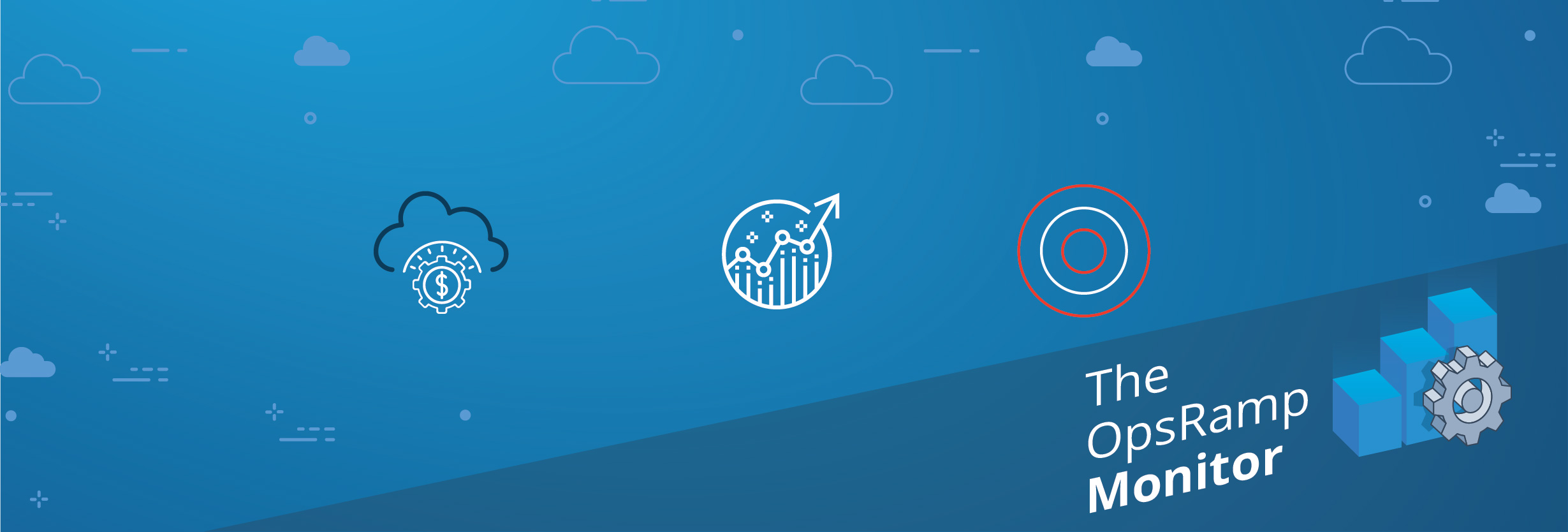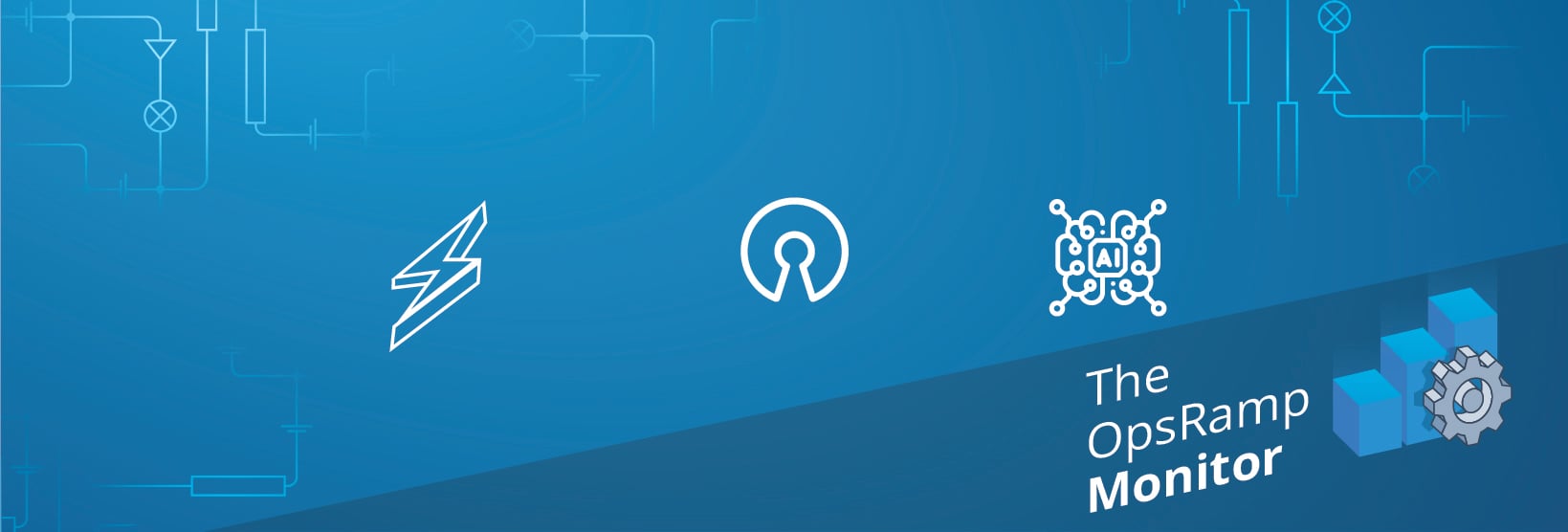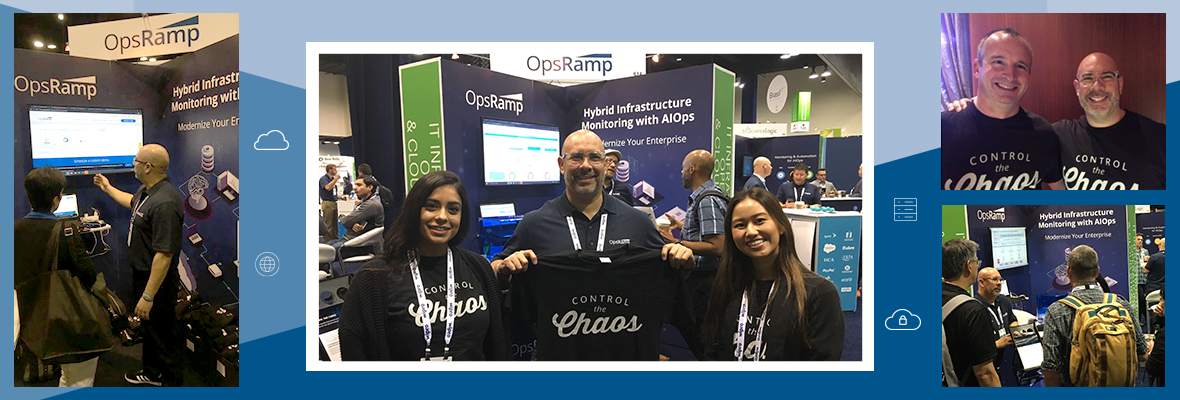Top Weekly Reads in IT I&O
The world of IT operations management, DevOps, AIOps, and cloud is always changing. That’s why there’s The OpsRamp Monitor: OpsRamp’s top weekly review of interesting developments and emerging trends in digital operations. Subscribe to our blog for the latest and greatest. And stay on top of everything Ops.
IT spending remains solid, with a nod to Azure, AI, edge. January is the month to plan ahead which often means taking a closer look at budgets. Spiceworks surveyed more than 1,000 technology buyers in companies across North America and Europe, finding that 44% of businesses plan to increase tech spend in 2020, up from 38% in 2019; an equal number (44%) said that spending would stay the same. The survey also found that business adoption of AI-powered technologies is expected to triple by 2021, and edge computing is expected to double.
Goldman Sachs surveyed 100 global 2000 CIOs in December, uncovering that “information technology spending plans declined slightly compared with Goldman Sachs' June and year-ago surveys, but remained in expansion mode,” according to CRN coverage. Even though AWS collects the most money from these public companies, as reported in the survey, Microsoft Azure leads in adoption: 97 of the CIOs said they’re currently using Azure and 121 planned to use it within three years, while 58 said they’re currently using AWS and 96 planned to use it by 2022. Public cloud was the third-highest spending priority for CIOs, with 29 percent planning to increase their spending. Let the cloud wars roll on.
A few more predictions. Last week we shared some of our favorite IT and ITOps predictions for the new year, and they keep coming. From CIO Dive, the authors suggest that Google Cloud will have an edge in the AI market, given the push for “explainable AI,” which is meant to identify the logic behind AI-supported decisions. “A higher number of companies will showcase their AI's explainability as a competitive factor. Given the number of workloads taking place in the cloud, this will especially benefit providers who lean into the concept, with Google Cloud at the head.” The authors also predict that “non-technologists” at big companies will be asked to do more software development, thanks to low-code tools. Did someone say, shadow development?
As Cisco continues to dominate market share for Ethernet networking, it’s interesting to note what the company says is in store for networking this year. Cisco’s Senior VP of engineering in enterprise networking, Anand Oswal, told NetworkWorld that we can expect more SD-WAN, Wi-Fi 6, multi-domain control and virtual networking. Buried in the article is something cooler: the concept of the network as sensor. “With software that is able to profile and classify the devices, endpoints, and applications – even when they are sending fully encrypted data – the network will be able to place the devices into virtual networks automatically, enable the correct rule set to protect those devices, and eventually identify security issues extremely quickly.”
Good news for TechOps. Target’s CIO Mike McNamara attributes the company’s digital sales growth of nearly 30 percent in the 2018 holiday season to a transformation in how it runs IT. Those changes included a shift from project management to product management, acceleration of AI and machine learning, DevOps and reskilling, Agile, and probably some good old-fashioned luck as well. McNamara now oversees Target’s data analytics and BI team: “This team, which includes roughly 1,000 data scientists, engineers, governance experts and analysts, helps Target leverage data to elevate the guest experience and improve its operations, including applying artificial intelligence (AI), machine learning (ML) and automation.”
Telemetry versus observability. In the world of IT operations, the phrase “observability” has been used more and more these days. But is it the same as monitoring? This blog by DevOps thought leader Sanjeev Sharma purports to set the record straight. Observability is all about the ability to ask arbitrary questions, which you didn’t plan to ask, he writes. His example from aviation explains it: “If they want to understand the state of the system at any given time, they can only make assumptions of the state based on all the telemetry data they are gathering. They can ask, ‘which service was performing slower than average when the last flight to Sydney from Dallas was boarded and closed’. They cannot however ask, ‘find me all the iOS Mobile App users on iOS version 13.x who were unable to load the seat map for Boeing 777-300ER aircraft while checking-in to their flight to Sydney today.” When you need observability and how best to achieve it will be a growing focus for IT operations teams in 2020, as they strive to learn more about business use cases and needs.
Next Steps:
- Read our coverage of the Top ITOps news of 2019.
- Check out other research on IT operations and infrastructure from OpsRamps and IT analysts.
- Subscribe to the OpsRamp Blog!





